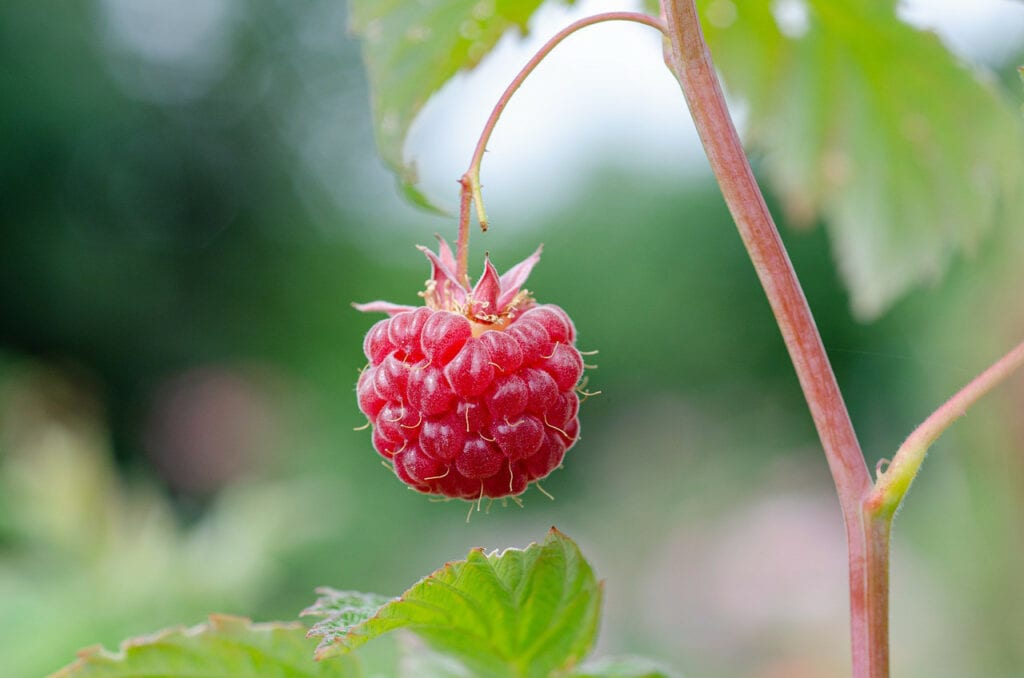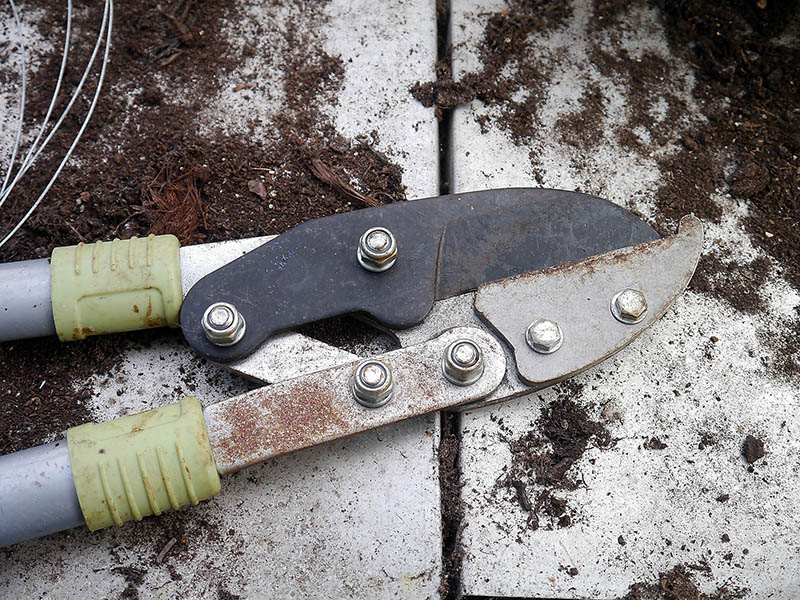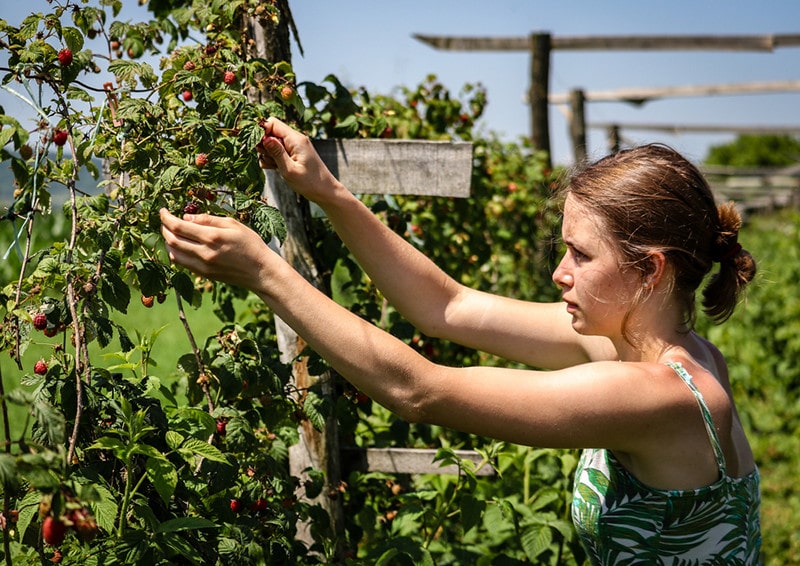When and How to Prune Raspberries: 8 Expert Tips
-
Pete Ortiz
- Last updated:

Who doesn’t love the taste of fresh raspberries? And you can’t get any fresher than growing them yourself. But if you want to go from a handful of delicious raspberries to buckets of them, you need to learn how to prune them.
There’s a lot to learn if you want to do it right, so keep reading and we’ll highlight eight different tips and tricks to help you prune your raspberry plants perfectly. It might take a little bit more work, but when you’re chowing down on raspberry after raspberry, it’ll be well worth the extra work.
The 8 Tips on When & How to Prune Raspberries
1. ID Your Raspberries
| Importance | High |
| Difficulty | Easy |
There are tons of different raspberry varieties, and if you want to prune them correctly you need to know what you’re working with. If you don’t know the exact type of raspberry bush you have, don’t worry.
Instead, focus on when the raspberries come into season. Knowing when the raspberries come into season gives you a great idea of when you should prune them, and this all starts with knowing what kind of raspberries you’re growing.
2. Prune the Right Time of Year
| Importance | High |
| Difficulty | Easy |
Figuring out what time of year to prune your raspberries all depends on what type of raspberries you’re growing. If you have an everbearing variety (also known as a two-crop variety) you’ll want to prune late in the winter.
Meanwhile, if you have a summer-bearing raspberry bush, prune it after the summer harvest and in the spring. Finally, if you have fall-bearing raspberries, prune them back after the fall harvest.
Simply pruning your raspberry bushes at the right time will go a long way in ensuring a successful harvest the following season.
3. Clean Your Tools

| Importance | High |
| Difficulty | Easy |
Anytime you prune a plant you want to clean your tools both before and after you prune. This prevents you from inadvertently spreading disease from plant to plant and potentially killing all your bushes when pruning them.
It’s also why you want to clean your tools after pruning each bush. It might be a bit more work, but if you do end up with a diseased plant this simple step can save your entire garden.
4. Know Your Stuff
| Importance | High |
| Difficulty | Challenging |
Before you head out and start pruning your raspberry bushes, do yourself a favor and do some research. Know the difference between a sapling, a floricane, and a primocane. Knowing what you’re looking at and what they do will go a long way in helping you prune back the right parts of the bush.
While you’re bound to make a few mistakes, knowing the basics will help minimize the damage and give you a successful harvest the following season.
5. Don’t Prune Scared
| Importance | High |
| Difficulty | Challenging |
Don’t be afraid to make significant changes when you’re pruning. If you accidentally cut too much away, it will negatively affect next year’s harvest, but the canes will grow back. While the smaller harvest might be a bad thing, it’ll be a great learning experience for next year!
But if you’re too scared to prune in the first place, you won’t learn anything, and you still won’t get the yield you want next season. Be bold when you’re pruning your plants and don’t be afraid to make a mistake.
6. Use a Trellis

| Importance | Moderate |
| Difficulty | Challenging |
If you’re serious about getting the most out of your raspberry plants, consider using a V-trellis after the pruning process. This trellis will force the canes to grow in the right direction for ideal results, giving each cane plenty of space to grow and thrive.
However, while there’s no doubt that trellises will improve yields, it’s also far more work. It is up to you how much effort you want to put in, but it’s the trellis that will give you prize-worth raspberry bushes.
7. Replant the Suckers
| Importance | Low |
| Difficulty | Moderate |
This isn’t something you need to do, but if you want to grow more raspberry bushes and you decide to prune some suckers, you already have everything you need. Simply replant the suckers where you want the additional plants, then give them time to grow.
Just ensure there’s plenty of space for the new plant to grow. That way, you’re not suffocating existing plants and stunting the growth of the new raspberry bush.
8. Space Everything Out
| Importance | High |
| Difficulty | Easy |
Your raspberry bushes need space. While you might think that more canes, suckers, and leaves will translate to more raspberries, that’s simply not the case. Raspberry plants thrive when each cane has plenty of space to grow.
Each cane can then devote more resources to growing more fruit, which is what you’re aiming for. Keep about three to five canes per linear foot and keep the rows between 1.5 and 2 feet wide for ideal results.
 Conclusion
Conclusion
Every gardener knows that the key to a good harvest is the preparation and work you’re willing to put in before the growing season starts. With raspberry bushes, it all starts with the pruning process.
Hopefully, our guide gave you the confidence to head out with your shears and prune your bushes when the time is right. Take the leap of faith, and during the next harvest, you’ll have tons of delicious raspberries to eat!
Featured Image Credit: Kathas_Fotos, Pixabay
Contents


